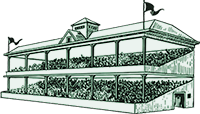A great American tradition born of the struggle to fill great American ballparks with great American baseball fans is dying. The ballpark giveaway is giving way to greed.
The Ohio Supreme Court heard arguments last Wednesday in a dispute over taxes on promotional items purchased by the Cincinnati Reds and offered to fans through promotional ticket packages. Ohio state law exempts companies from paying taxes on items they buy and resell, but the issue is whether promotional items like bobbleheads are being sold as part of a ticket package or given away in an effort to increase ticket sales. Simply put, if the team gives away bobbleheads, they pay tax. If they sell them with the ticket, they do not.
Regardless of whether the Reds’ techniques are legal or not, the attempt to avoid paying $88,000 in state taxes is pretty insensitive given the Reds’ recent history, both on and off the field. The construction of Great American Ball Park cost Hamilton County taxpayers $349 million and deprived federal taxpayers of $142 million in revenue — the third-most costly of any Major League Baseball stadium according to a Brookings Institute study. The Reds share responsibility with the Cincinnati Bengals for burying Ohio’s Hamilton County in debt, resulting in cuts to social services, including the sale of a hospital, and forcing Hamilton County Commissioners to refinance $376 million of stadium bond debt in 2016. Property owners in Hamilton County were promised 30 percent of the revenue raised by the half-cent increase to the sales tax in the form of reduced tax bills, but the county has rarely had the money to pay the stadium debt and offer the full tax rollback.
Meanwhile, the Reds could go from increasing attendance by giving away items for which they once paid tax to profiting from tax-free items while also increasing attendance. And they’re not the only ones.
The Minnesota Twins are also offering more of these promotional ticket packages and fewer giveaways after winning a similar case back in 1998. Like Ohio, “goods and services purchased solely to resell, lease or rent in the regular course of business” are tax exempt in Minnesota. In fact, most states allow businesses to purchase items tax-free as long as those items are to be resold. So this is only the beginning, and already, great American ballparks are turning giveaways into takeaways, likely turning a profit on what was a cheap means of advertising and now is a cheaper means of advertising.
According to a sales representative at Associated Premium Corporation, a preferred vendor of MLB promotional items, a seven-inch bobblehead purchased in bulk exceeding 10,000 units could cost a ballclub between $3 and $5. Markups on promotional ticket packages are considerably higher than that, and in some ballparks, they vary by seat location.
Senior manager of group sales for the Twins, Phil McMullen, informed me that the prices for their promotional ticket packages are based on the price of their group tickets, which explains why the markup for the promotional item appears to vary by seat location when compared to buying a single game ticket alone. The same cannot be said for the Reds.
The June 19 promotional bobblehead in Cincinnati is available at three different price points in three different sections of the ballpark. The promotional ticket package is $25 per “View Level” ticket, $55 for a seat in the “Field Box” section and $80 for an “Infield Box” seat. The price of a ticket to the same game in the “View Level” section is $17. A field box seat is $41, and infield box seats range from $65 to $68. So the same bobblehead costs $8 when purchased with a “View Level” ticket, $14 when purchased with a “Field Box” ticket and between $12 and $15 when purchased with an “Infield Box” ticket. Assuming the “Field Box” price is based on one ticket price, Cincinnati fans purchasing the promotional ticket package will pay three different prices for the exact same product in the same store.
“It’s consistently very close…the difference is negligible,” Reds’ group sales representative Kristen Meyers said of the varying costs for the promotional items. She attempted to explain the difference in price to accommodate fans buying tickets with exact change, but the Twins’ ticket prices are also full-dollar amounts and their cost of the promotional items don’t vary by seat location.
Minimal research revealed that the Reds aren’t the only Major League Baseball team selling promotional items at varying prices depending on seat location. On June 23, the Colorado Rockies are selling a promotional ticket package available in five different sections of the ballpark that includes a University of Nebraska hat. Based on the Rockies’ group ticket prices, fans will pay either $8, $11 or $12 for the hat, depending on their seat location. In Milwaukee on July 7, fans will pay four different prices for a bobblehead depending on their seat location.
If MLB teams are going to sell promotional items on a sliding scale to make those items more accessible to lower-income fans, that should be advertised and owned. But forcing fans who pay more for their tickets to also pay more for a promotional item without their knowledge is theft. While buying a promotional ticket package might be preferable to standing in line for hours with no guarantee of scoring a giveaway item, don’t think for a moment you’re taking advantage of a business desperate to sell tickets. Quite the opposite is true, and the degree to which they fleece you varies as much as the prices of the promotional items they claim to sell in order to avoid paying state tax. But if you must have a promotional item offered with one of these promotional ticket packages, you’re likely best off buying the cheapest seats.















